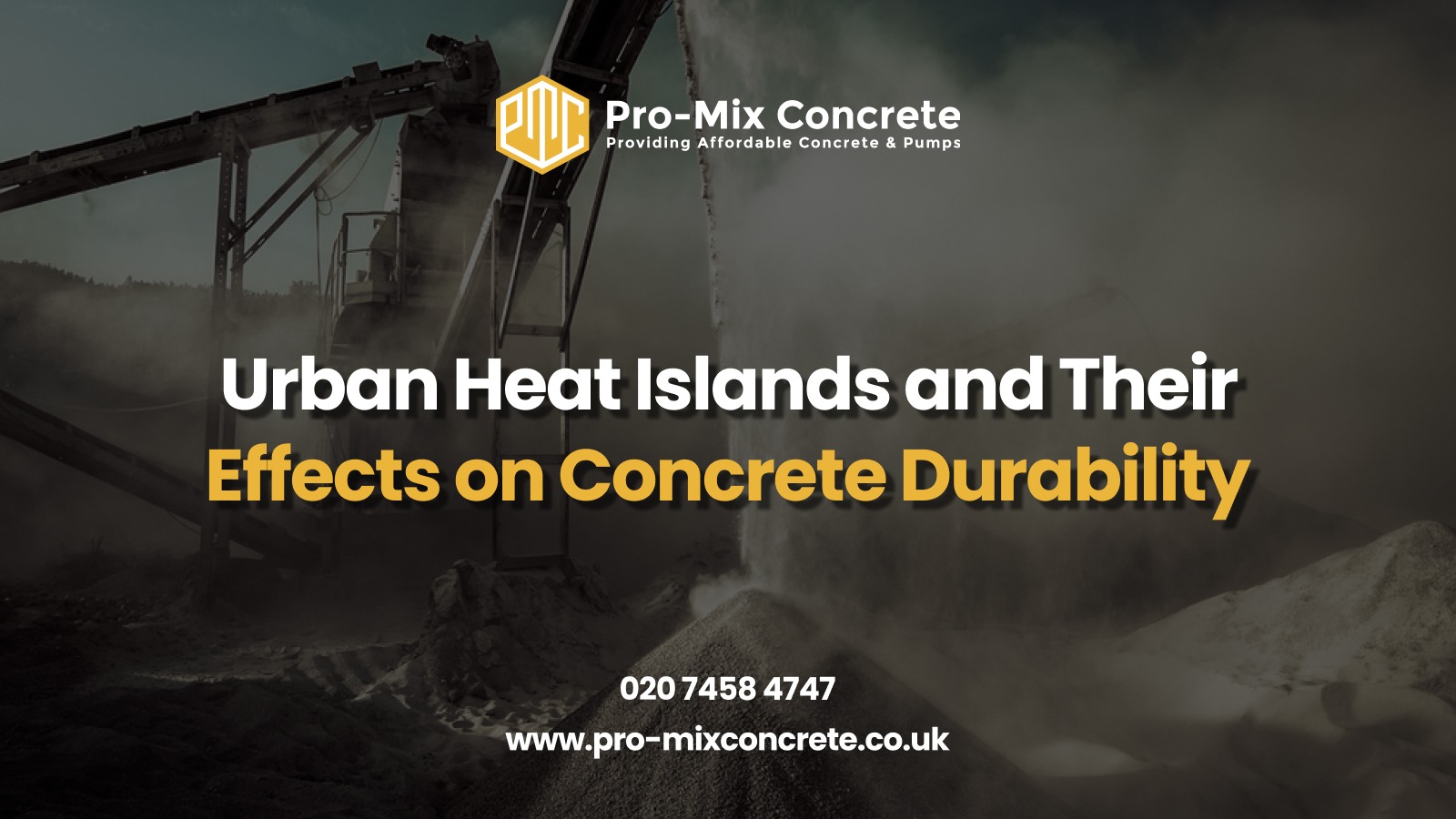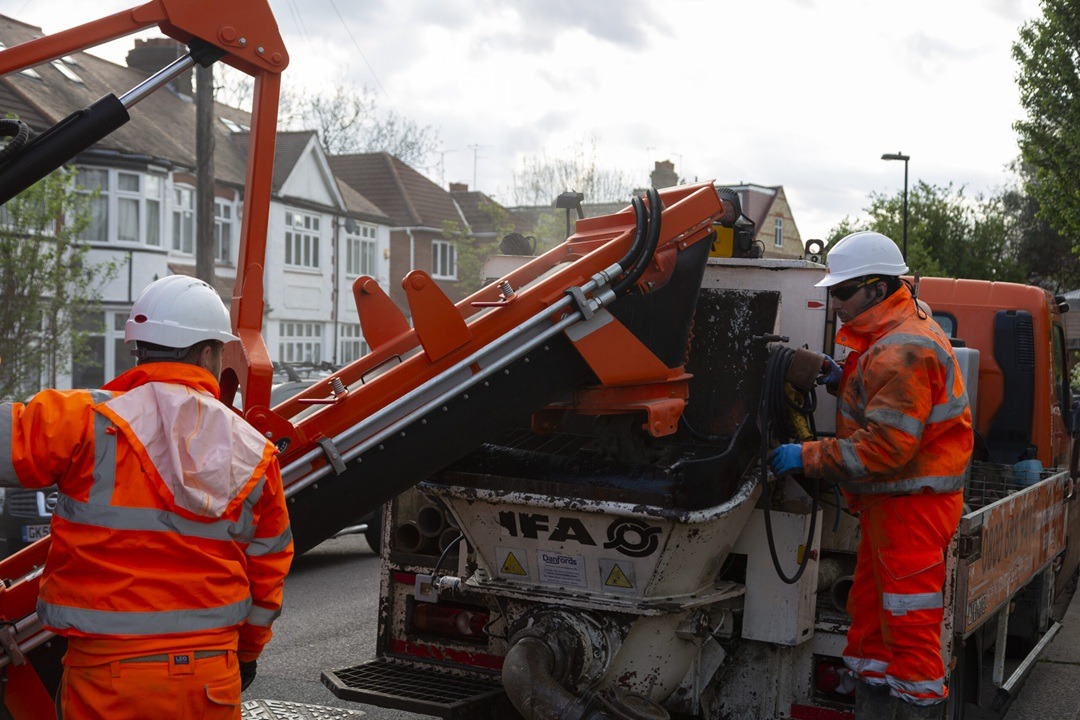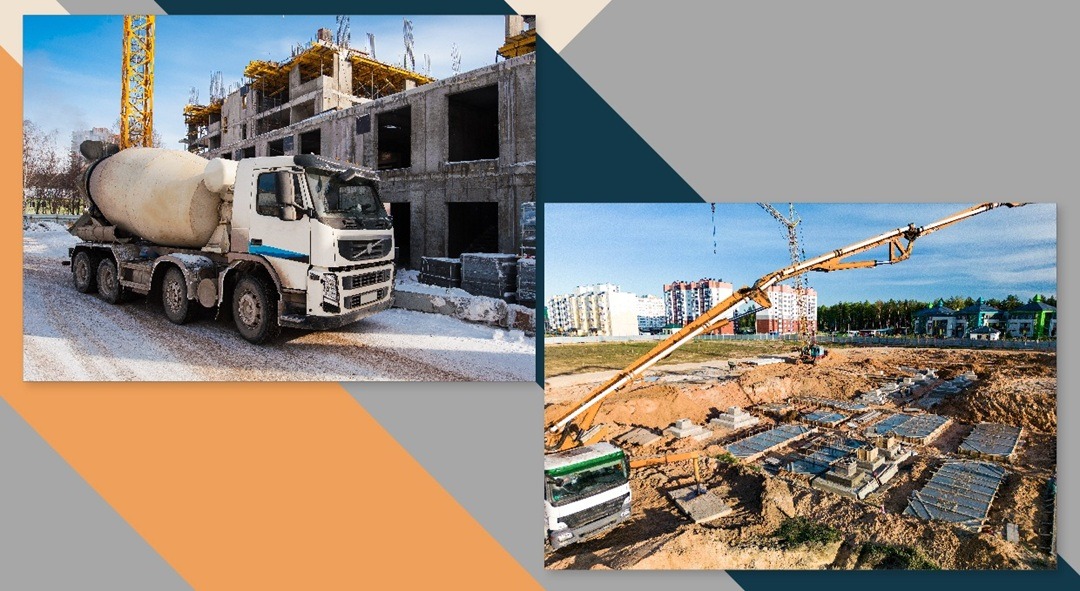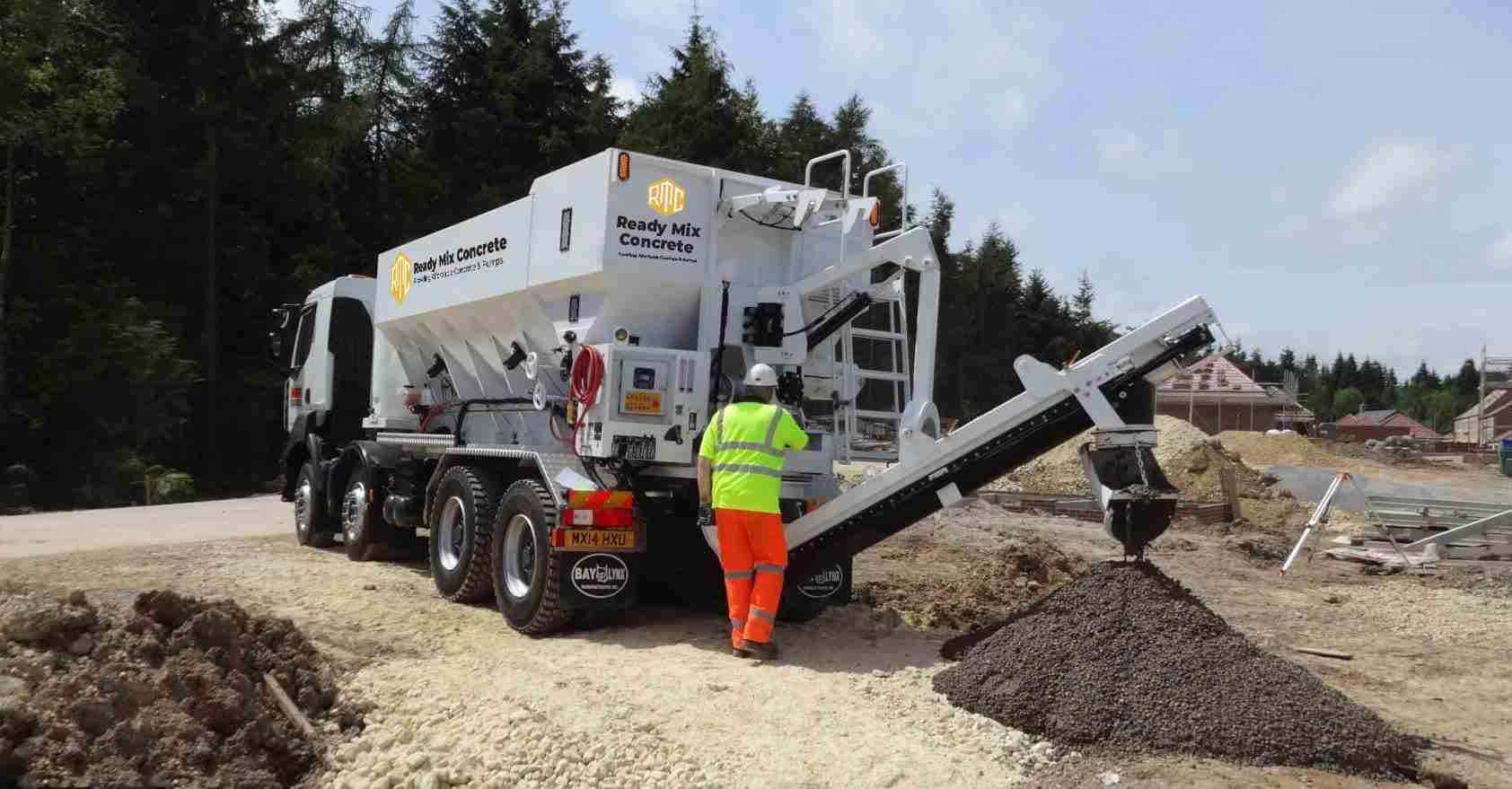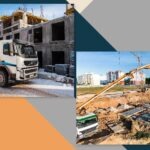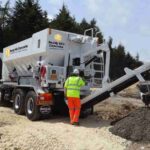Have you ever wondered how the intense heat of a city affects the concrete beneath your feet? As urban areas grow and temperatures soar, Urban Heat Islands (UHIs) are becoming an increasingly important issue. Concrete is known for its durability, but the extreme heat caused by UHIs can significantly shorten its lifespan. Over time, this heat accelerates wear and tear, causing cracks, deterioration, and even structural failures. Because urbanisation is on the rise and climate change is worsening these temperature extremes, the impact on concrete durability is something we cannot afford to ignore.
What Are Urban Heat Islands?
Urban Heat Islands (UHIs) occur when cities become significantly hotter than rural areas nearby. On average, urban areas can be up to 10°F (5.6°C) hotter than their surroundings, especially at night and during the winter. But what causes this temperature difference?
- Concrete and Asphalt: In cities, the ground is often covered with concrete and asphalt. These materials absorb heat during the day and release it slowly at night, making the temperature stay high for longer.
- Human Activity: Cars, air conditioners, factories, and other activities produce heat, which increases the temperature in cities.
- Lack of Green Spaces: Trees and plants naturally cool the air. But in many cities, green spaces are being replaced by buildings and roads, so there is less natural cooling.
- Building Design: Many buildings trap heat inside. Skyscrapers with their reflective glass and tightly sealed structures prevent heat from escaping, making cities hotter.
Why Concrete Struggles in UHI Conditions
Concrete is used in many urban areas including roads, buildings, bridges, and more. But even though it’s tough, concrete isn’t immune to heat. When exposed to the extreme heat of UHIs, concrete can crack, weaken, and break down faster. Here’s how:
1. Thermal Expansion and Contraction
Concrete expands and contracts when temperatures change. This is normal, but the temperature shifts in UHI areas are more extreme, which puts a lot of pressure on the concrete.
- Cracks and Breaks: The constant stretching and shrinking can cause cracks to form. These cracks let in moisture and other harmful substances, making the problem worse.
- Expanding Joints: Concrete structures often have joints designed to allow for expansion. However, in UHI areas, these joints can wear out more quickly due to constant temperature changes.
2. Speeding Up Chemical Reactions
High temperatures also speed up the chemical processes inside concrete, which can lead to damage over time.
- Carbonation: When carbon dioxide from the air mixes with concrete, it causes a weakening reaction. In a UHI, this happens more quickly because of the higher temperatures, shortening the life of concrete structures.
- Alkali-Silica Reaction (ASR): Some concrete contains aggregates (building materials like sand and gravel). When these aggregates react with heat, they can form a gel that makes the concrete swell and crack.
- Sulfate Attack: Sulfates in the soil or water can also react with concrete and cause it to break down. The heat in UHIs speeds up this process.
3. Moisture Problems
Concrete needs the right amount of moisture to stay strong. In a UHI, moisture levels can change too quickly, leading to damage.
- Faster Evaporation: When the temperature rises, moisture in the concrete evaporates more quickly. This can cause cracks, as the concrete shrinks too fast.
- Humidity Changes: As the humidity inside and outside of concrete changes, different parts of the structure can expand and shrink at different rates, leading to cracks and weakening.
- Water Trapping: Cracks allow water to get into the concrete. When that water freezes, it can cause further damage by expanding inside the cracks.
4. Uneven Temperature
In UHIs, temperature differences across a building or structure can cause uneven expansion, which stresses the concrete.
- Uneven Expansion: Different parts of the concrete may expand at different rates, which can lead to cracks or internal damage.
- Thermal Shock: Rapid temperature changes, such as when rain hits hot concrete, can cause cracks to form. This sudden cooling and heating shock the material, making it weaker.
Why This Matters for Concrete Durability
The combined effects of all these problems lead to concrete structures wearing out faster in UHI conditions.
- Shorter Lifespan: How long does concrete last? Concrete is meant to last a long time, but extreme heat speeds up its deterioration. Structures may need repairs or replacements sooner than expected.
- Higher Maintenance Costs: Concrete in UHI areas needs more maintenance. Cracks, spalling, and joint damage are common problems that can lead to costly repairs.
- Safety Risks: When concrete weakens, it can no longer bear the same weight or withstand pressure. This poses risks for people using roads, bridges, or buildings.
- Aesthetic Damage: Concrete that cracks or discolours over time can look unsightly, affecting the appearance of public spaces and buildings.
How to Protect Concrete from UHI Damage
There are several strategies we can use to reduce the impact of UHIs on concrete:
1. Smart Urban Design
Cities can take steps to reduce the heat buildup in urban areas, which will also protect concrete.
- Cool Roofs and Pavements: Light-coloured roofs and pavements reflect sunlight instead of absorbing it, which helps lower the overall temperature and reduces the stress on concrete.
- More Green Spaces: Adding more parks, trees, and green rooftops can cool the environment and reduce the UHI effect.
- Heat-Resistant Materials: Using materials that are better at resisting heat, such as reflective glass or heat-resistant coatings, can help protect buildings from high temperatures.
2. Adding More Greenery
Planting more trees and creating green spaces can cool down urban areas, benefiting both people and concrete.
- Shading: Trees provide shade, which can protect concrete surfaces from direct sunlight and reduce temperature spikes.
- Green Roofs: These not only keep buildings cooler but also reduce the overall heat in urban areas, making concrete more durable.
3. Better Concrete Mixes
Innovative concrete solutions can help improve the durability of concrete exposed to extreme heat.
- Heat-Resistant Concrete: Special concrete mixes that include heat-resistant materials can help concrete survive higher temperatures without breaking down as quickly.
- Permeable Concrete: This type of concrete allows water to pass through it, which helps keep the temperature down and reduces the risk of cracks.
4. Regular Maintenance
Concrete that faces UHI conditions needs to be checked and maintained more often.
- Surface Treatments: Applying coatings to concrete can protect it from moisture and heat damage.
- Sensors: Installing sensors in concrete can help monitor its condition and detect problems early, allowing for quicker repairs.
The Role of Concrete Suppliers
Concrete suppliers play a key role in helping cities and builders prepare for UHI effects. By offering heat-resistant and sustainable concrete options, they help ensure that urban structures last longer. Suppliers can also educate customers on the best materials to use in UHI areas.
Conclusion
As cities continue to grow and temperatures rise, Urban Heat Islands are becoming a bigger challenge for concrete durability. Extreme heat speeds up the wear and tear on concrete, leading to cracks, faster deterioration, and higher maintenance costs. But by designing cities smartly, using the right materials, and maintaining concrete properly, we can protect our infrastructure from the damaging effects of UHIs. By taking action now, we can make sure that our cities and their concrete structures stay strong and safe for years to come.
Ready to Build Stronger, Longer-Lasting Structures?
If you’re looking for a top-quality Concrete Supplier in London that can withstand the challenges of urban heat and ensure durability, look no further. Pro-mix Concrete offers the reliable, high-performance solutions you need for your next project. Don’t let the heat compromise your infrastructure. Trust us to deliver products that stand the test of time.
Same-Day and Next-Day Delivery Options from London Concrete Suppliers
Have you ever wondered how the intense heat of a city affects the concrete beneath...
Read MoreLine Pump Hire vs. Boom Pump Hire Prices in London
Have you ever wondered how the intense heat of a city affects the concrete beneath...
Read MoreHow Quickly Concrete Must Be Used Once Delivered In London
Have you ever wondered how the intense heat of a city affects the concrete beneath...
Read More- Dennis Broderick
- Dennis Broderick is the founder and owner of Pro-Mix Concrete Company, a trusted name in ready-mix concrete solutions across the UK. With over 20 years of hands-on experience in the construction and concrete industry, Dennis brings unmatched expertise, practical insights, and a commitment to quality on every project - from residential driveways to large-scale commercial developments.
BlogOctober 30, 2025Same-Day and Next-Day Delivery Options from London Concrete Suppliers
BlogOctober 28, 2025Line Pump Hire vs. Boom Pump Hire Prices in London
BlogOctober 25, 2025How Quickly Concrete Must Be Used Once Delivered In London Traffic
BlogOctober 23, 2025How To Get The Best Value When Hiring A Concrete Pump For A Small Domestic Job?
